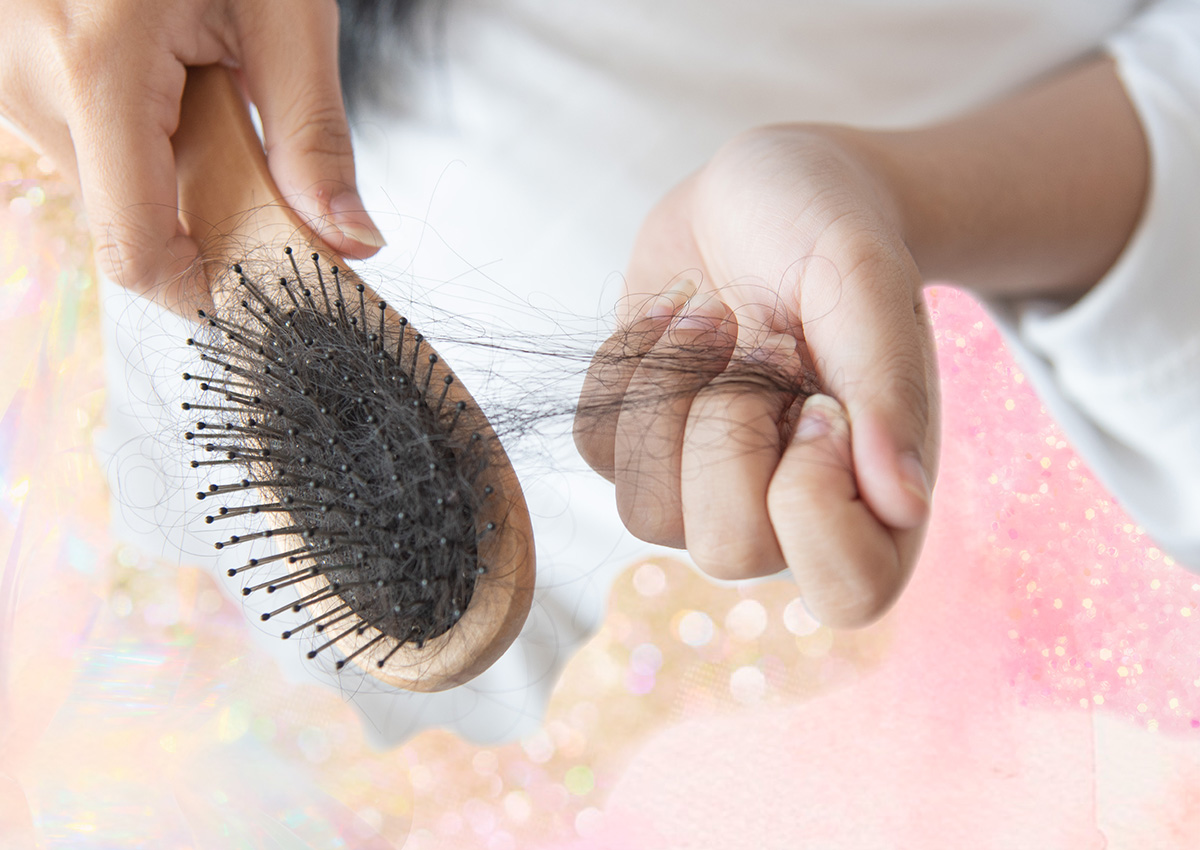Losing More Hair Than Usual? Fall Hair Shedding Is Real!

Maybe you’ve noticed a bit more hair in the shower drain after you’ve finished your usual shampoo and condition. Or perhaps your hairbrush seems to be holding onto more these days, or you feel like you’re leaving a trail of strands in your wake. There’s a solid chance you’re not just imagining things because we’ve officially entered “fall hair shedding” season.
 via Giphy
via Giphy
Seasonal hair loss is a known phenomenon, and there’s even scientific research to back it up. We’re covering some theories on why fall hair shedding occurs (a quick lil science lesson that’s super fascinating), what’s considered a “normal” amount of hair to lose this time of year, and tips that’ll help reduce your overall loss.
The Hair Growth Cycle
To understand fall hair shedding, you’ll need some quick background info on the typical hair growth cycle. Dr. Isfahan Chambers-Harris, trichologist and founder of Alodia Haircare, tells us that healthy hair cycles through three phases:
- Anagen Phase: a period of active growth that lasts between two to seven years. Roughly 85% of your hair strands are in this phase at any given time.
- Catagen Phase: a transitional period when hair stops growing and the follicle prepares for hibernation mode. About 5% of your hair is in this phase.
- Telogen Phase: a period of rest/hibernation when the follicle is dormant. During this phase, the follicle will eventually release the old hair shaft and a strand will fall out. About 10% of your hair is in this phase.
“After that dormancy phase, your hair follicle regenerates, the cycle begins anew, and new hair grows actively,” adds Kerry E. Yates, trichologist and founder of Colour Collective. “In situations where the growth cycle becomes irregular — [like when you’re stressed, not getting proper nutrition, or are affected by seasonal hair shedding] – then fewer hairs are in that active growth stage. That means hair stays in the dormant period for longer, and a higher number of hairs fall out, which can result in some thinning.”
Fall Hair Shedding: What To Know
Research is still underway, but preliminary studies and anecdotal reports tell us that many people experience an uptick in hair shedding in fall and winter. So what gives? Well, pretty much every theory out there attributes seasonal hair shedding to an evolutionary quirk.
 via Giphy
via Giphy
For instance, “some research has shown that during the hotter months of spring and summer, we have less hair in the telogen phase, so it appears as though our hair is thicker,” says Harris-Chambers. She explains, “This is thought to occur because humans need their scalps protected from the sun.”
Another theory – and the two may overlap – is that our bodies signal our hair follicles to release old hair in early fall through winter to make way for new hair growth so we can keep warmer in the cold months, Yates says.
Generally speaking, seasonal hair shedding lasts for about three months but can linger as long as five months.
 via Giphy
via Giphy
How Much Hair Are We Talking?
On average, we lose up to 100 hairs per day, but seasonal hair shedding can cause us to lose around 150. In more excessive shedding situations, which are fringe cases versus the norm, that number might be closer to 400 or even 500 per day.
While this seems like a lot – and can look scary – keep in mind, we have about 100,000 hairs on our head, and the majority of it is growing every day. In other words, as long as we’re healthy, then we are growing hair much faster than we’re losing it, even during more intense shedding cycles.
Posts You'll Love:
“If it’s truly seasonal shedding – and not shedding caused by diet, stress, genetics, or being ill – it’s not something to be truly concerned about,” says Harris-Chambers. “And if the follicle is healthy, the hair will grow back.”
 via Giphy
via Giphy
How To Minimize Seasonal Hair Loss
The truth is that there’s not a whole lot we can do to curb natural seasonal hair shedding except to continue treating ourselves well. That means routine shampooing and conditioning using quality hair care products and eating balanced diets that ensure we’re getting enough protein (what our hair is made from), fats, carbs, vitamins, and minerals.
Here are a few additional ways you can keep your hair healthy all year long, including during the fall and winter:
- Take care of your scalp: We talk so much about our hair, but a nourished scalp is arguably more important. Massage your scalp daily to encourage hair flow, use scalp treatments once a week, and avoid applying heavy oils to your scalp or layering too much dry shampoo, which can clog the follicle and prevent proper hair growth. Try Kevin Murphy’s SCALP.SPA SCRUB, $35, which gently exfoliates your scalp to nix buildup and promote scalp health and hair growth.
- Consider hair supplements: Hair supplements are specifically formulated to promote both hair growth and to make hair stronger, which can help keep your mane looking full and shiny. Nutrofol, $84, and Viviscal, $30, are consistently recommended by the pros.
- Be gentle to your hair and scalp: Avoid tight ponytails, rough brushing, abrasive cleansers, excessive heat styling, and overwashing. Dr. Yates recommends washing no more than once every other day and insists on using heat protectants and avoiding hairstyles that can tug at your strands.
FYI: These are common signs of an unhealthy scalp! Also, there are other reasons why we experience an uptick in hair loss and shedding, including a condition known as “telogen effluvium.”























Leave a comment